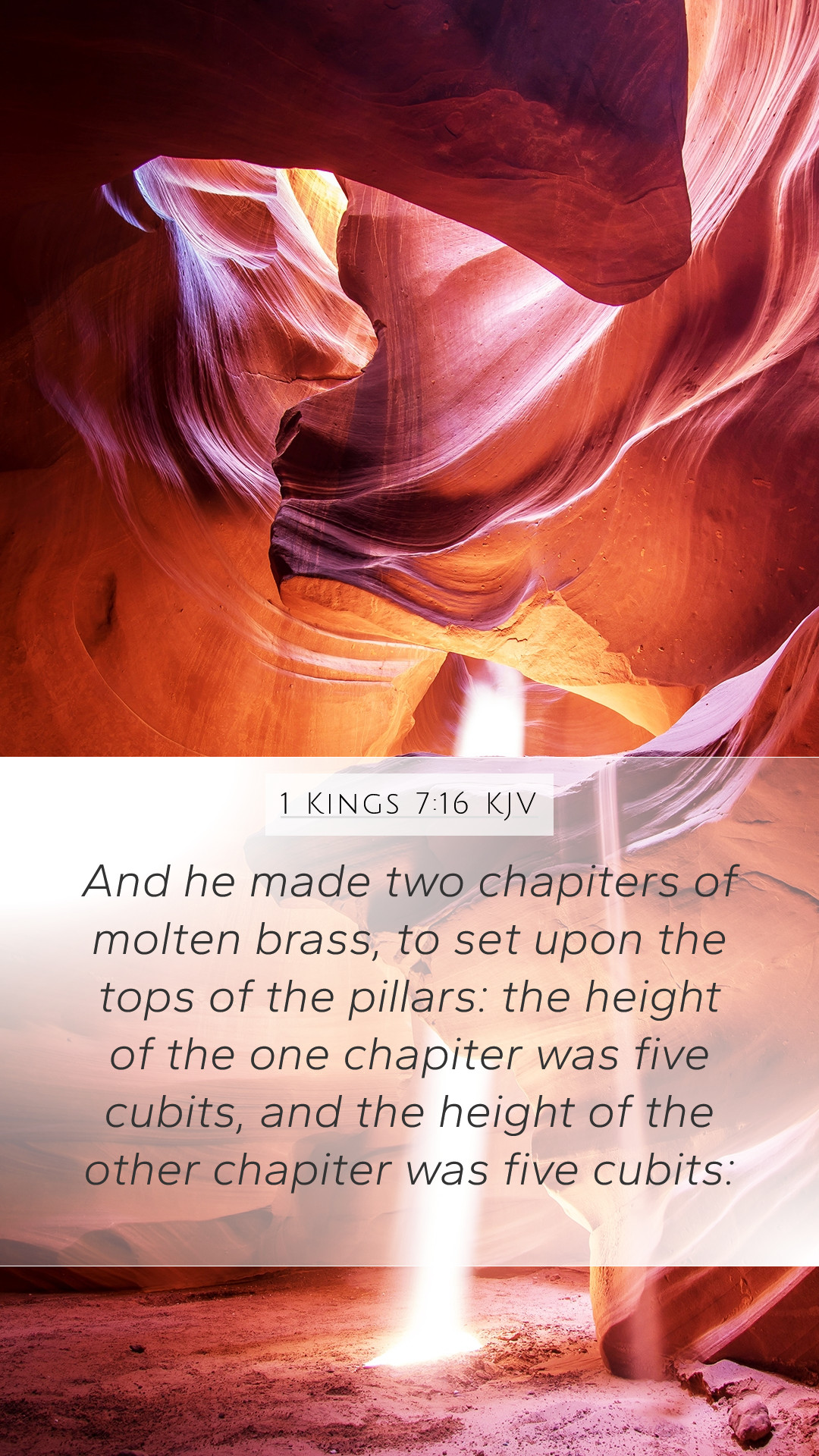Bible Verse Commentary: 1 Kings 7:16
Verse: 1 Kings 7:16 - "And he made two pillars of brass, eighteen cubits high apiece: and a line of twelve cubits did compass either of them about." (KJV)
Introduction to Biblical Exegesis
Understanding Bible verse meanings requires careful textual analysis and contextual study. In 1 Kings 7:16, the construction of the two brass pillars serves as a significant element in Solomon's temple. This commentary will explore the scriptural analysis and interpretations from various public domain commentaries.
Overview of the Verse
This verse describes how King Solomon crafted two impressive pillars for the temple’s entrance in Jerusalem. Each pillar stood eighteen cubits high, demonstrating not only the architectural ambition of Solomon but also the deep symbolic meaning tied to the temple structure.
Insights from Matthew Henry
Matthew Henry highlights the significance of these pillars, referring to them as representations of strength and stability. He notes that their height symbolizes the majesty of God's presence and sets a tone of reverence for worship. Furthermore, Henry suggests that these pillars, named Jachin and Boaz, imply that God’s presence should be the foundation of all human endeavors.
Insights from Albert Barnes
Albert Barnes elaborates on the physical dimensions of the pillars, stating that the eighteen cubits denote a height of approximately 27 feet. Barnes argues that the extensive use of brass reflects the wealth and resources at Solomon's disposal, showcasing the glory of the Lord and serving as a visual declaration of Solomon’s accumulated wisdom and wealth under divine approval.
Insights from Adam Clarke
Adam Clarke provides an in-depth examination of the engineering behind these pillars. He notes that the twelve cubits in circumference showcases not only their enormous scale but also the craftsmanship involved. Clarke interprets the pillars as symbols of God’s strength and the support for the temple, emphasizing their role in religious symbolism and the importance of stability in one’s faith.
Symbolism in 1 Kings 7:16
- Strength: The pillars symbolize divine support and the strength of God's house.
- Beauty: Their brass composition signifies beauty and glory, mirroring the nature of God.
- Connection to Worship: As entrance markers, they remind worshippers of approaching the divine.
Application of the Verse
In applying the insights from 1 Kings 7:16 to daily life, believers can reflect on the need for spiritual pillars in their own faith journey. Just as the physical pillars held up the temple, individuals are encouraged to identify and strengthen their foundational beliefs that support their relationship with God.
Cross References
- 2 Chronicles 3:15-17: Description of the pillars in more detail.
- Jeremiah 52:21: Later mentions of pillars and their symbolic significance.
- 1 Kings 6:36: The construction details of the temple itself.
- Revelation 3:12: The concept of pillars in the context of heaven.
- Psalms 104:5: Reflecting the stability of God's creation.
Conclusion
In conclusion, 1 Kings 7:16 serves as a rich source for Bible verse interpretations and meanings of Bible verses. It speaks not only to the architectural magnificence of Solomon's temple but also to profound spiritual truths. Studying this verse encourages individuals to build strong spiritual foundations akin to the pillars of the temple, fostering a deeper understanding of Scripture and its application in daily life.
For those engaging in Bible study groups or seeking Bible study resources, 1 Kings 7:16 provides an ideal passage for reflection and discussion on how physical structures can symbolize spiritual truths.


